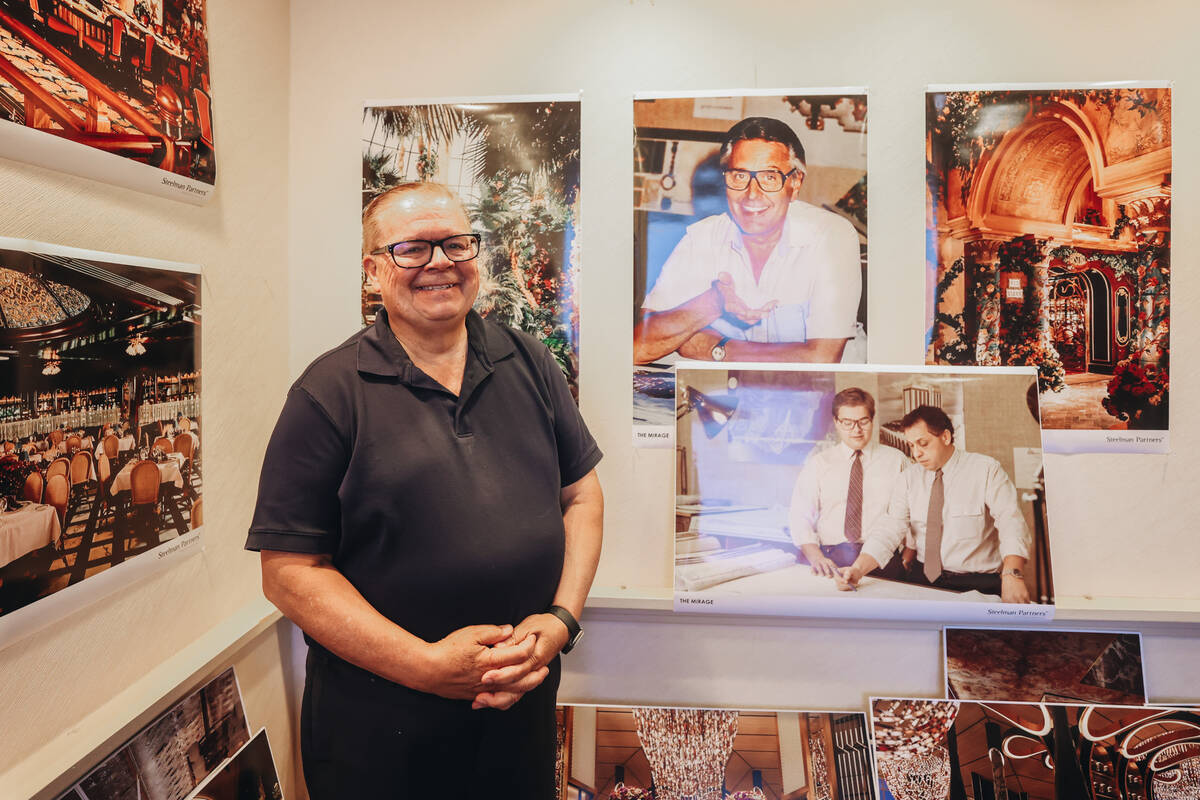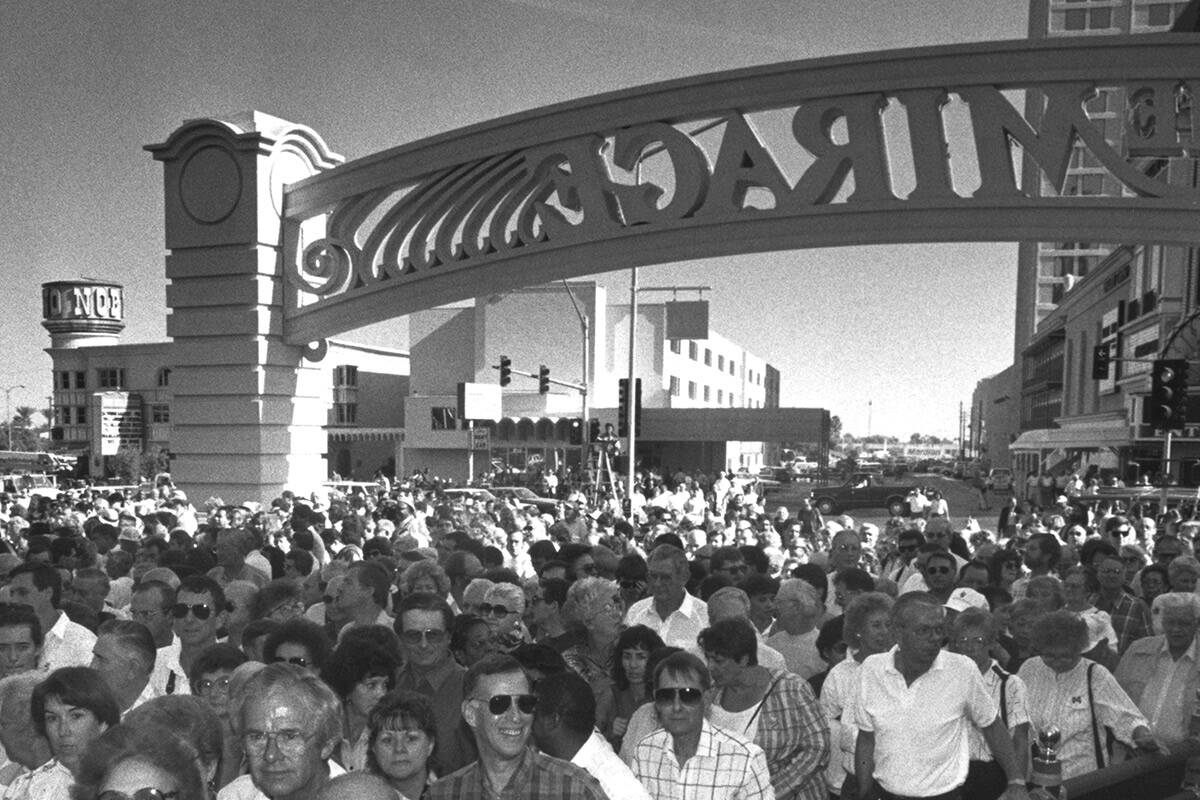‘The little building that could’: Mirage architect recalls opening, sees Hard Rock success
As the legendary Mirage closes its doors Wednesday after more than 34 years on the Strip, a leading Las Vegas architect who was part of the design team that opened the property is looking forward to what’s next.
Paul Steelman, the world-renowned casino designer, expects that whatever the Seminole Indian Tribe delivers as the new Hard Rock Resort in the years ahead is going to bring thousands more tourists to Southern Nevada as Las Vegas reinvents itself once again — a trend former owner and developer Steve Wynn led when The Mirage first opened in 1989.
It’ll be a tough act to follow.
At the time it opened, The Mirage was the world’s most expensive hotel project at $630 million, was one of the world’s largest hotel properties and was the first Strip hotel built in 16 years.
It was built in 24 months — an unheard of construction timeline — and Wynn cloaked the project in mystery in order to surprise guests when the doors finally opened on Nov. 22, 1989 — ahead of schedule to accommodate a boxing match between Sugar Ray Leonard and Roberto Duran III on Dec. 7.
A place in history
While The Mirage will always hold its place in history as the mega resort that forever changed the face of Las Vegas, Steelman recalled some of the many firsts the 3,044-room property brought to Southern Nevada.
— In an innovation first tried at The Mirage and never duplicated since, the resort opened with 10 restaurants that all used one central kitchen. “That was part of the economy of the project, one single kitchen,” Steelman said in an exclusive interview with the Review-Journal. “So you can imagine today, a casino hotel probably has 25 kitchens, where in The Mirage they had one, which served all the restaurants, and the backside of it served all the convention center.”
— The Mirage was the first property to install a luggage conveyance system. “It was the first casino ever to use an airport luggage conveyor in it,” he said, “Because Steve Wynn didn’t want the luggage to be drawn through the casino. He wanted the bags to be put on a conveyor at the porte cochere, going up to Luggage Central. (Porters) all had headsets on back then, and they would say, ‘Deliver these bags to Room 3101.’ And then the bags would come up and they’d try to beat the guests there, because the elevators in The Mirage were all the way in the back.”
— The Y-shaped footprint of the towers was a first for a major resort in Las Vegas. “The Y-shaped tower, of course, was defining,” Steelman said. “There were some time-motion studies done. Steve Wynn made a rule that no guest should walk more than 300 feet. So we set the buildings at the FAA-mandated height, and once we got them taken down from that particular height, that gave us what we had to do as far as the length. And then we experimented with Ts and Ys and Xs and all sorts of things, and it was determined that it would be a Y. The Y-shaped tower is also unique today because none of it, for economy, goes over the casino. The casino is in fact in a wedge that the tower is around. It was a very unique approach to it and it actually worked very, very well.”
Low ceilings
— Wynn was an advocate for low ceilings in the casino to provide an intimate atmosphere. “The casino ceiling was also very controversial. Everybody was going towards very super high, tall ceilings at that particular time because Steve Wynn was a firm believer that the high ceilings ruin the gaming experience. He realized that the gaming experience was a personal experience between you and the dealer. … We experimented with ceilings, all different types of ceilings, different types of designs. It turned out to be a rather low ceiling. It was only 14 feet tall. The ceilings over the pits went down to 9 feet tall. So it was a very unique low ceiling and it felt almost homey when you sat at a blackjack table there. You weren’t besieged by area and space and smoke. You felt within your space. You felt that you knew the dealer. And it worked.”
— While financial experts and gaming executives were skeptical about whether The Mirage would ever be able to generate the $1 million a day necessary to pay expenses, the property far exceeded all expectations, easily covering the costs associated with the junk bonds used to build it.
Steelman, who first met Wynn in Atlantic City, New Jersey, where he owned and operated the Golden Nugget there, was part of a team that first began drawing sketches and renderings of what eventually would be The Mirage in Las Vegas. He went to work with architect Joel Bergman and raised his hand when asked for volunteers to work on Wynn’s new Strip project.
Over the years, Steelman has worked around the world on casino-resort projects while Wynn built a total of 13 mega resorts — each one more successful than the previous one.
“We called The Mirage ‘the little building that could,’” he said. “It was one of these great places filled with energy, filled with people. And look what it did. It allowed Steve to define his company, to build Treasure Island, to build Bellagio, to build Beau Rivage, to eventually build 13 mega resorts in his lifetime. I don’t think there’s too many people in the world that ever built 13.”
And what about The Mirage and the Hard Rock?
“Hard Rock’s coming in here and, yes, they have their own ideas. Yes, they’ll create something iconic in this guitar sort of building. I’m sure the renovations will be welcome and I’m sure we’ll attract more people to Las Vegas. At the end of the day, that’s what it’s all about. And that’s what I do,” he said.
Interior important
Steelman is a firm believer that what’s on the outside, whether it’s Mirage’s volcano or Hard Rock’s guitar-shaped hotel tower, will draw people to the building, but what’s inside the building will determine the property’s staying power.
“Like I said, the exterior gets you in the door once, the interiors keep you coming back,” he said. “As long as the interiors are great, and you know, (Hard Rock CEO) Jim Allen is a talented guy, there’s no question about that. I mean, he sprung up this industry from the lowly levels of Atlantic City and the food and beverage and this and that to running one of the most successful gaming companies in the world. And obviously with a very, very successful brand, I think the brand definition and his brand network will assist, there’s no question to me, in creating more tourism for Las Vegas. But the interiors, there’s got to be a lot of spectacular stuff. He needs some really super spectacular things.”
Contact Richard N. Velotta at rvelotta@reviewjournal.com or 702-477-3893. Follow @RickVelotta on X.




















